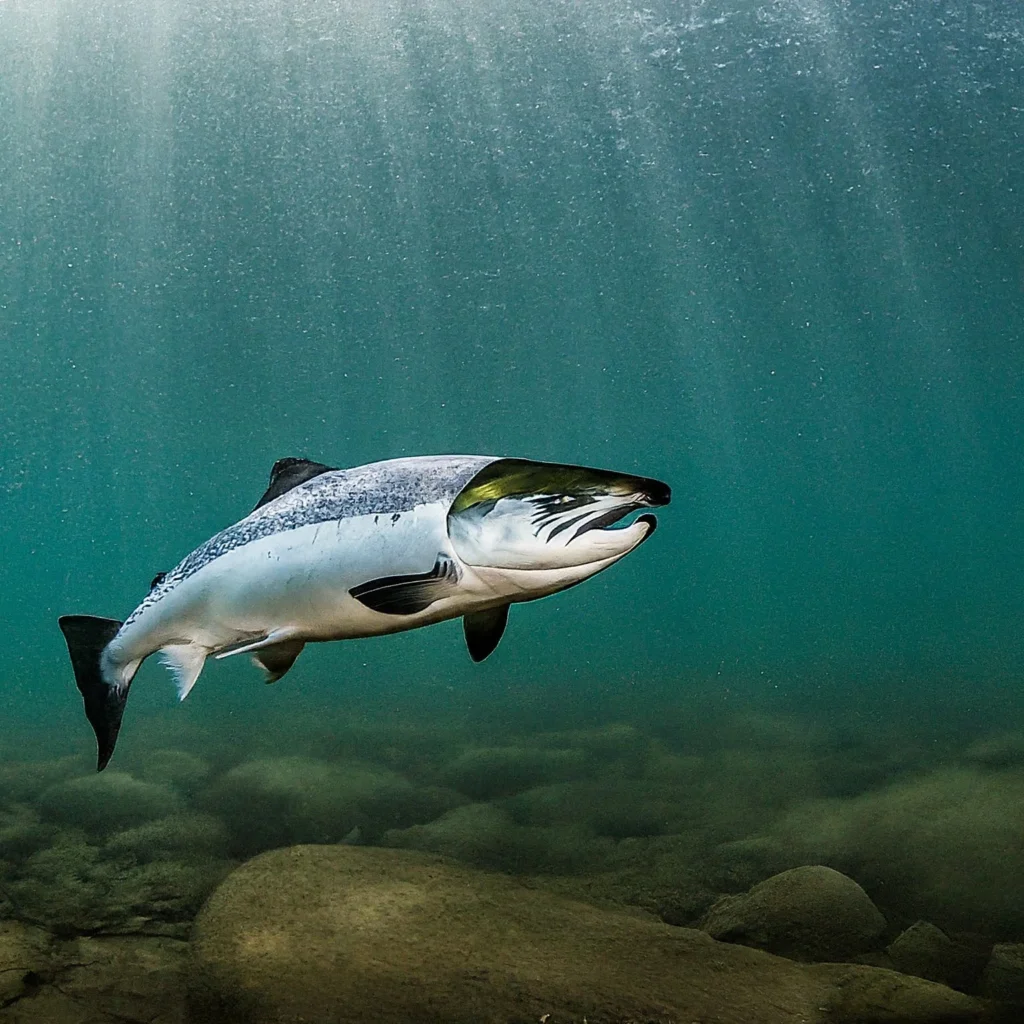Salmon are a diverse group of fish species belonging to the family Salmonidae, known for their remarkable life cycle, migratory behavior, and economic importance. These iconic fish play crucial roles in freshwater and marine ecosystems, serving as keystone species and supporting various industries worldwide.
Physical Characteristics:
Salmon have streamlined bodies, typically ranging from 20 to 60 inches in length, depending on the species. They are characterized by their silver-colored scales, deeply forked tails, and adipose fins. During spawning season, many species develop vibrant colors, such as red, green, or purple.
Life Cycle and Migration:
Salmon exhibit anadromous behavior, meaning they hatch in freshwater rivers and streams, migrate to the ocean to mature, and return to their natal streams to spawn. This remarkable journey can span thousands of miles and often involves navigating complex river systems and overcoming natural barriers such as waterfalls.
Reproduction and Spawning:
Salmon reproduce through external fertilization, with females depositing their eggs in gravel nests called redds. Males then release sperm to fertilize the eggs. After spawning, both male and female salmon typically die, completing their life cycle and providing essential nutrients to their offspring and the ecosystem.
Ecological Importance:
Salmon play vital ecological roles by transferring nutrients from marine to freshwater ecosystems during their upstream migration. Their carcasses provide valuable nutrients to riparian habitats, supporting plant growth and contributing to ecosystem productivity. Additionally, salmon serve as prey for various predators, including bears, eagles, and other fish species.
Economic and Cultural Significance:
Salmon are commercially valuable fish, supporting fisheries and aquaculture industries worldwide. They are prized for their delicious flavor and nutritional value, making them a staple food in many cultures. Salmon fishing also holds cultural significance for indigenous peoples, who have relied on these fish for sustenance and cultural practices for millennia.
Conservation Challenges:
Salmon populations face numerous threats, including habitat destruction, overfishing, pollution, climate change, and the construction of dams and barriers that impede their migration. These challenges have led to declines in salmon populations globally, prompting conservation efforts to protect critical habitats, restore river connectivity, and regulate fishing practices.
Conclusion:
Salmon are iconic fish species with complex life histories and profound ecological, economic, and cultural importance. Understanding and addressing the challenges facing salmon populations are essential for ensuring their survival and preserving the health of freshwater and marine ecosystems they inhabit.

